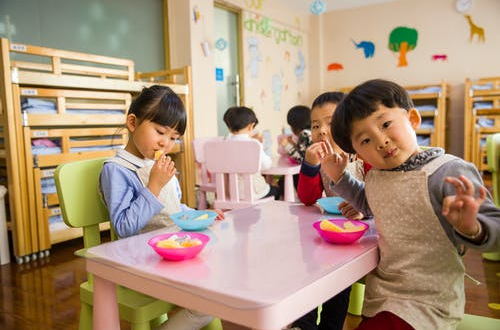Preschool kids are full of energy. Experiences at this level, such as Eikoh’s childcare in St Ives, influence a kid’s growth, early development, and perception of life. Therefore, creating an environment that taps into this energy positively is crucial. The setting created should be responsive to every kid to ensure their healthy growth and development wherein a popular choice being Preschool. This is not to mention their safety, which involves protection from physical harm while ensuring healthy surroundings. The brief guide below includes a few tips you can find helpful in creating a conducive learning environment for kindergarten and preschool kids.
1. A Supportive Educator
The person responsible for instilling the knowledge should be a warm, caring, and supportive disciplinarian. This seems like too much in one person but is necessary. How a teacher will treat the child will influence how they perceive school. Therefore, a tutor should be someone the kids feel secure around. It makes them share what is disturbing them and even do a consultation. This will help to promote development.
Besides, most kids view authority figures as supermen who can solve anything. For this reason, the educator should remain calm at all times and wisely respond to situations. The last thing anyone wants is a child who has no trust in their teacher. Therefore, the tutor should strive to maintain emotional balance, level-headedness, and composure. This gives the children a role model to look up to hence a positive learning environment.
2. Room for Engaging Activities
A major component of learning is physical activity. Playtime for kindergarten pupils is very essential to help them unwind after sessions of classwork. The activities need to be tailored to enhance learning but in a fun way. This means creating a reliable playground whose safety can be monitored as the kids play. If you head over to play, you will discover a wide range of kids’ playground equipment to choose from. If you’re a principal, you will want to pick playground equipment that is safe for your kids and is designed to meet your specific needs as a school. Go for quality equipment that offers value for money.
Some exercises to be done include singing, artwork, outdoor engagement, and nature-based activities. Through song and dance, the children get to bond with each other, allowing them to develop their social skills. Art encourages the little ones to explore their creative sides, giving them independence. These can also help the instructor discover talents at a young age. Tutors should ensure the chosen activities incorporate all kids and no one feels left out. This results in happy, strong kids, which helps boost their response to knowledge being instilled.
3. Physical Setting
According to leading educationists at the preschool, the role of teachers is to be more of an enabler than anything else. The teachers need to build confidence and open a path of trust and support with the young minds. Creating a positive learning environment can go a long way in allowing the children to pick up what is being taught at the preschool.
Also, the learning space should be free of clutter. A child has not mastered focus, meaning their concentration span is very low. When things are scattered all around, it is easy for them to get sidetracked. Lastly, the area should be comfortable in terms of temperatures and lighting. All these limit distraction and maximize learning.How the study area is set will influence how the children learn. The furniture should be organized to make movement and accessibility easier for kids, including those using wheelchairs. The furnishings used should be of the appropriate size. This is to prevent the kids from straining, which can negatively impact their health and learning.
4. Create a Routine
The learners are still young, so springing a new item each day could be overwhelming. This can get the kids confused, which leads to lower productivity. Therefore, have a list of things that remain constant and with specific times. Having a schedule for activities keeps the kid comfortable in the program, making the transition easy. Besides, routine activities like a recital, class meetings, or reflective personal pieces will bring the learners together.
Most children are nostalgic about being apart from their parents. Therefore, you have to uplift their moods. A recital at the beginning of the day takes their minds away from home and into learning. Meetings and sharing personal pieces help to create trust, confidence, and togetherness. This translates to fewer conflicts and ample time for learning.
5. Safe Space
The environment has to be safe from hazards that pose health or physical harm to the children. This makes them feel safe and secure hence more alert in class. First, the learning environment should be clean and free from allergens. To a child, allergy effects like sneezing can be very uncomfortable and disturbing to the rest. Besides, kids always end up with a hand on their mouths despite how much you encourage otherwise. Having a germ-free zone and hand washing areas will reduce instances of health risks.
The area should also be childproofed to avoid physical injuries. This means no sharp objects or faulty equipment is within their reach. Lastly, good personal relationships should be encouraged to reduce intimidation. Instances of these should be dealt with accordingly.
A good environment is not solely determined by how aesthetically appealing or fun a place looks. It also depends on how the child feels and responds to it. Therefore, take time to incorporate all the above aspects for better learning outcomes.
 HammBurg Be informed with latest news, reviews, entertainment, lifestyle tips, and much more.
HammBurg Be informed with latest news, reviews, entertainment, lifestyle tips, and much more.




